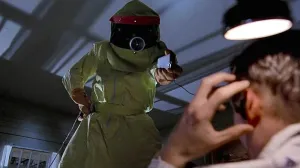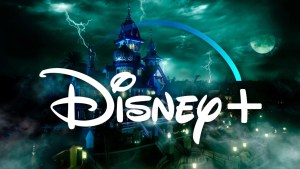
The newest installment in the Halloween franchise is less than one week away, and it is ready to take this classic horror story back to its roots. Michael Myers has gone many places, both literally and metaphorically, in the 40 years between his debut in 1978 and today. Origins, explanations, reboots, supernatural ephemera, and far more elements than can be tallied have been tacked onto the very first movie in the franchise. None of them have provided much in the way of improvement, and that goes to explain why the newest Halloween is providing a direct sequel that focuses on core elements of the original. After all of this time, the very first Halloween still stands as the essential slasher film.
Videos by ComicBook.com
There’s not much value in taking classics for granted though. Just because a film, a novel, a comic, or anything else has remained popular for 40 years does not entitle it to automatic appreciation. Even if Halloween remains a gold standard for the horror genre and the definitive slasher film, the best possible question that can be asked is, why?
Anyone watching Halloween is bound to walk away with a different take, even the renowned film critic Pauline Kael managed to walk away from an initial screening with a less-than-positive disposition. However, both time and the clarification provided by the newest Halloween from director David Gordon Green offer some big takeaways as to what has made the original truly deserving of its devilish reputation.

Keep It Simple
Halloween functions as an ur-text for slasher films. It was not the first movie made that could be appropriately grouped into this sub-genre, but it feels like the most significant early touchstone when reflecting on the massive expanse of slasher movies from today’s perspective. The formula of a killer dispatching an expansive cast, usually of teenagers, with little to no supernatural help has become a staple of the larger horror genre. It’s a cheap sort of film to produce, with the original Halloween only having about a $300,000 budget, and even the most poorly produced manage to deliver plenty of screams and laughs due to the shocking, visceral nature of the stories. There’s something special about the slasher; that’s the only way to explain its longevity, constant appeal, and bizarre diversity. When considering what a slasher movie is and why it works, there’s simply no better example than Halloween.
Halloween assembles the pieces of a slasher movie like a William Rothko painting, boiling everything down to essential colors and shapes without removing the human touch of the artist’s hand. Michael Myers is the prototypical stalker, his mask and jumpsuit don’t provide him with a gimmick but serve instead to produce a man-like figure that is more generic, emphasizing size and strength above all else. The teenagers are fun to observe but primarily just that. Laurie Strode is the exception, providing the complexity of a teenager’s inner life with self-doubt and surprising resolve, both before and after the action begins. The chaos is nothing short of perfect, with each death possessing elements of impact and creativity. Every moment of violence is considered, never allowing the audience to chuckle at content that is every bit as terrifying as it ought to be. Each element is essential and perfectly at peace with its role in this genre structure, serving the minimalist story as well as they possibly can.

Enjoyable Artistry
No matter how essential or clear the plan behind Halloween might have been, it’s possible that the script would have been transformed into the same sort of cheap thrill ride many audiences primarily associate with the slasher genre, if not for the incredible talents involved. John Carpenter‘s directorial skill (full stop, no genre modifiers required) is undeniable. That Halloween with its tremendous reputation is only one of many competitors in the discussion for Carpenter’s best film, competing against the likes of They Live, The Thing, The Fog, and Assault on Precinct 13, speaks volumes. Each scene in Halloween can be broken down and studied, every shot is considered whether it is used to build tension or to reveal a body in a way that will leave both the victim’s girlfriend and entire theater behind her screaming. It is Carpenter’s eye that perfectly realizes the themes and tone embedded within the perfect simplicity of Halloween.
This level of talent can be discovered on many levels of the film, ranging from the obvious to the technical in nature. Jamie Lee Curtis’ debut performance made her an instant star, and for good reason. In the unmoving face of an implacable killer, she carried the entire emotional momentum of the film. Carpenter’s score, composed in only three days, is another example of how his “back to basics” approach makes for an unforgettable experience. After 40 years the simple piano theme is still capable of sending chills down the spine, just as well as something like “Tubular Bells” from The Exorcist. For all of the fun that can be had in constantly revisiting this film, there is no debate about the level of artistry on display that makes all of the thrills possible.

Evil Has Come to Film
Even under the mask, Michael Myers is still the star of Halloween. The film centers on this killer who is reduced to being simply “The Shape” in the credits. Amongst a crowded field of infamous slasher antagonists, Michael Myers stands out because he embodies the terror that these films focus upon better than any other monster or madman. Whereas many slasher movies explain their horrors with a revolting origin or supernatural myth, Michael Myers simply is. From the very start of the film in which he murders his elder sister, he is a force for evil: silent, brutal, and without humanity.
This minimalist approach to the villain unlocked every nightmare moviegoers bring into the theater with them. He is the worst form of the mysterious killer, whether it takes the form of a rattling back door at night or figure striding down a dark street. In the nightmare he is the version of a threat that cannot be fought or reasoned with, a bogeyman that simply wants to bring chaos into whatever world you have organized.
Even after 40 years, there is no better expression of this suburban sort of fear than the one brought to theaters in Halloween. It remains the scariest and best form of the slasher film, one still capable of making us all double check the doors are locked before going to bed at night.








